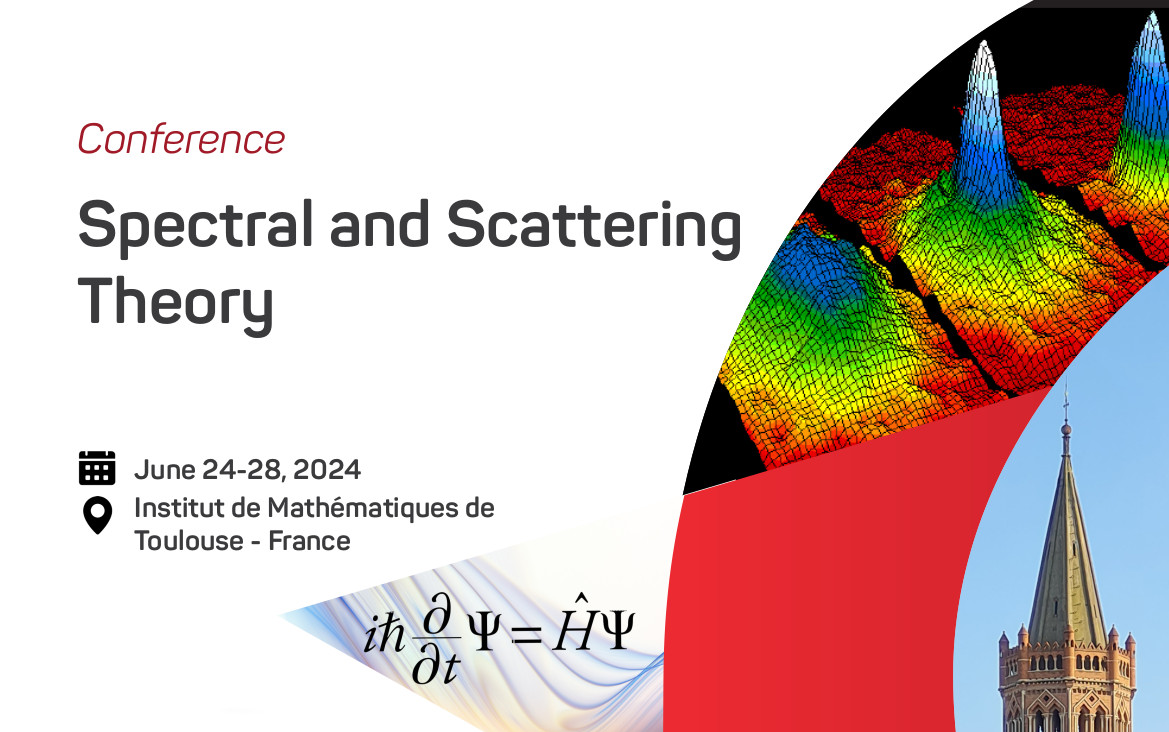Spectral and Scattering Theory - MAQM
→
Europe/Paris
Institut de Mathématiques de Toulouse
Institut de Mathématiques de Toulouse
Université Paul Sabatier
118, route de Narbonne - Bat. 1R3
31062 Toulouse Cedex 9
,
Description

This event is part of the thematic semester Mathematical Aspects of Quantum Mechanics.
The conference will start on Monday, June 24, at 2 p.m. and finish on Friday, June 28, at 12h30 p.m.
All the talks will take place in building 1R3 at the Université Paul Sabatier (see the map).
Speakers:
- Gregory Berkolaiko (Texas University): Duistermaat index and eigenvalue interlacing for perturbations in boundary conditions
- Sabine Boegli (Durham University): On the discrete eigenvalues of Schrödinger operators with complex potentials
- Vincent Bruneau (Université de Bordeaux): Can one hear an obstacle subject to a constant magnetic field
- Maxence Cassier (Institut Fresnel, Marseille): High contrast elliptic operators in honeycomb structures
- Rayan Fahs (Université Toulouse III)
- Borbala Gerhat (Czech Technical University in Prague): Energy decay for strongly damped wave equations
- Dietrich Häfner (Université Grenoble Alpes): The Unruh state for massless fermions on Kerr spacetime and its Hadamard property
- Bernard Helffer (Nantes Université): Tunneling in radial potential wells and constant magnetic field
- Maxime Ingremeau (Université Côte d'Azur): Scattering resonances of large quantum graphs
- Joachim Kerner (FernUniversität in Hagen): Spectral comparison results on quantum graphs
- Jean Lagacé (King's College London): Spectral decomposition on the space of flat surfaces: Laplacians and Siegel—Veech Transforms
- Stefan Le Coz (Université Toulouse III): Blow-up on a star-graph
- Haruya Mizutani (Osaka University): Uniform resolvent estimates for a few non-elliptic operators
- Alexander Pushnitski (King's College London): Hankel operators with band spectra and elliptic functions
- Constanza Rojas-Molina (CY Cergy Paris Université)
- Petr Siegl (TU Graz): Resolvent estimates for one-dimensional Dirac operators with imaginary potentials
- Gregor Tanner (University of Nottingham): A quantum graph approach to metamaterial design
- Joseph Viola (Nantes Université): Some applications of the (complexified) metaplectic group to Schrödinger evolutions with non-self-adjoint operators
- Brian Winn (Loughborough University): Quantum ergodicity for large quantum graphs
Inscription
Registration form for invited speakers
